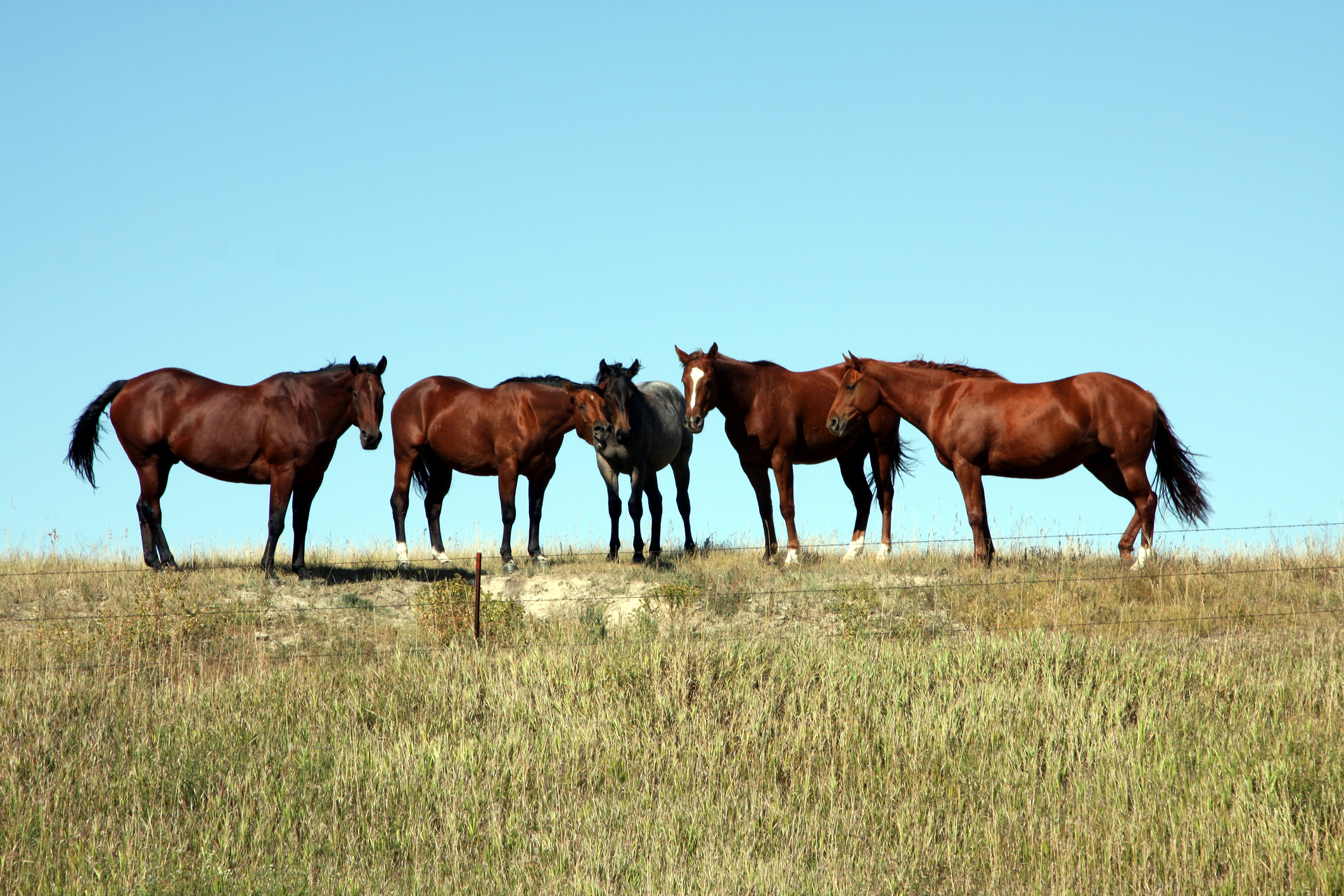A lengthy joint resolution in the Wyoming House calls upon Congress to bring back equine slaughter and processing for markets outside the United States. Wyoming is offering the resolution as a “best management practice” for all those wild mustangs that roam and breed with little effective management throughout the Cowboy State.
By offering the solution to Wyoming’s wild mustang problem, the usual sides are lining up. Wyoming’s Park County Commissioner Lee Livingston sees equine slaughter as “practical and humane.” Grace Kuhn, speaking for the American Wild Horse Campaign, said it’s “impractical and inhumane.”
The slaughter of horses for human food — widely practiced in other parts of the world — ended in the United States in 2007 when Congress prohibited the expenditure of public funds for equine inspections without which its sale for human food is prohibited.
Wild horses and burros fall under federal authority under a 1971 law that protects the wild animals from ” harassment or death” and “declares that wild free-roaming horses are living symbols of the historic and pioneer spirit of the West.”
Management of wild horses and burros in Wyoming and the West falls on the federal Bureau of Land Management (BLM) and U.S. Forest Service under the Federal Land Policy and Management Act.
The Wyoming resolution says the wild horse and burro populations “unduly infringe upon other uses by damaging riverbeds and overgrazing on limited forage while using and otherwise damaging the infrastructure of other public land use users.” And because wild equines have no natural predators, populations double every four to five years.
Wyoming lawmakers are also concerned that the growing wild horse and burro populations stray onto private property without any control because of their protected status. The only option for this infringement of property rights is to file a report with a local BLM or USFS office.
Federal agencies are permitted to set “appropriate management levels” for wild horse and burro populations. Old, sick, and lame animals can be destroyed. After offering others for adoption, they can be “destroyed in the most human and cost-effective manner possible.”
But the Wyoming resolution says the federal agencies still cannot catch the exploding horse and burro populations “due to exponential increases in the numbers of horses and burrows on the range.”
The resolution points to problems with adoption programs, lack of fertility control, and lawsuits causing insufficient availability of holding facilities and increased management costs. BLM, in a 2020 report to Congress recognized “the needed for decisive action to reverse harm to western landscapes and the wild horses and burros occupying them.”
In addition to the effective ban on horse slaughter for human consumption that has existed since 2007, the Interior Department budget in 2020 prohibited using funds for the destruction of healthy animals for processing into commercial products.
That, the resolution says, has left Wyoming with “continued exponential growth” of its wild horse and burro populations. “A pragmatic shift” in wild horse and burro management policy “is prudent and necessary to help address this crisis and achieve protection of wild horses and burros in management numbers.”
(To sign up for a free subscription to Food Safety News, click here.)

